ZMINA: Rebuilding | Angle 772: Two Communities and Reaweaked Tradition
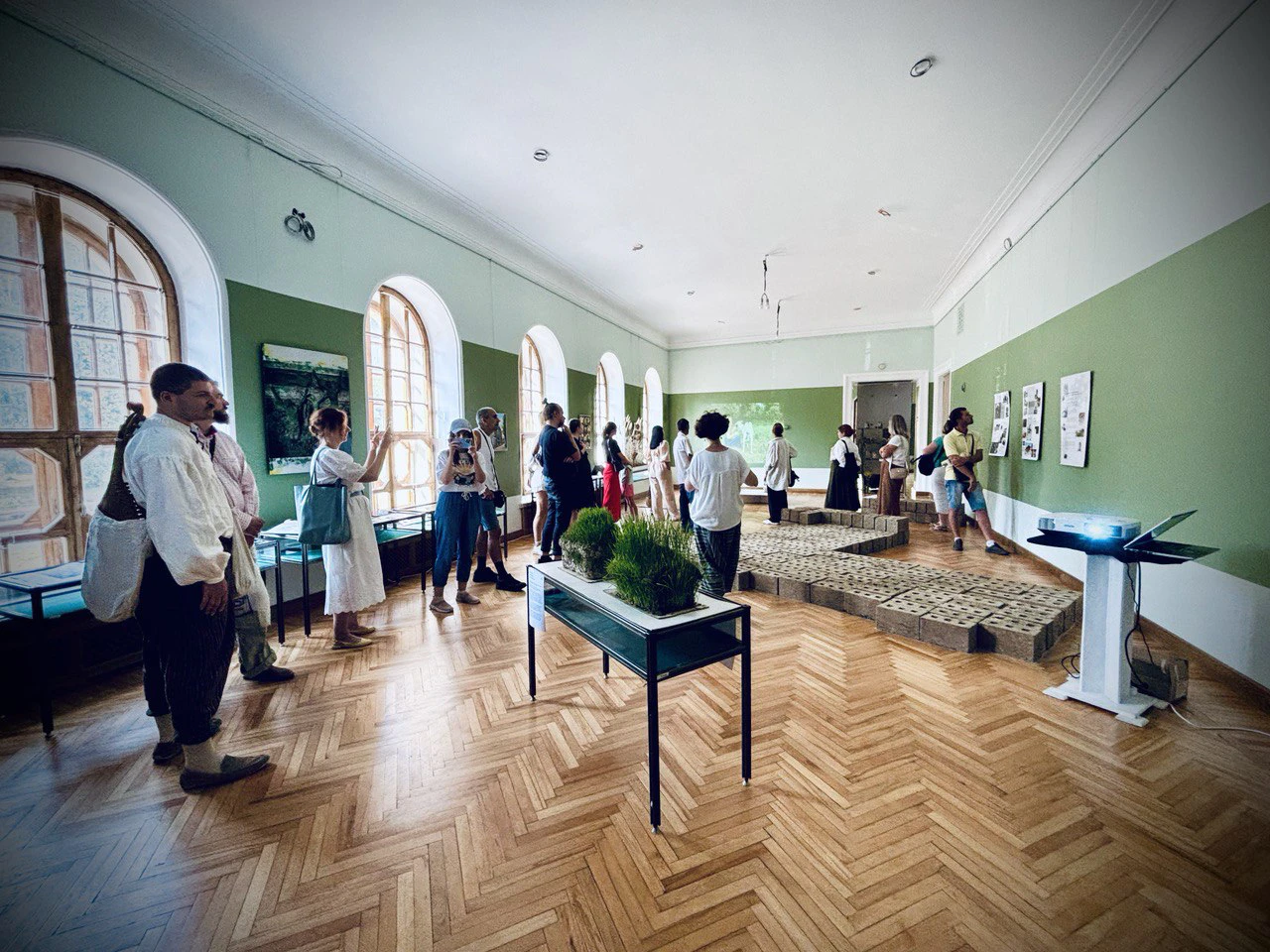
Two Ukrainian communities, Krasnokutsk and Zbarazh have come together to explore and revive their shared cultural heritage. They are separated by 772 kilometres, but now they are connected thanks to a project, which combines traditional knowledge with contemporary art. We spoke about Angle 772 with Iryna Kats and Lusya Nychai, the creators of the project.
Please start by introducing the communities involved in the project. What exactly should we understand by the term "community," and who constitutes it?
Iryna Kats (IK): This project brought together two very different but equally rich communities: the Krasnokutskа community (Kharkiv region) and the Zbarazh community (Ternopil region) — two places separated by 772 kilometres but deeply connected through their histories, traditions, and ways of life.
When we say "community," we don’t just mean a group of people living in the same place. We refer to the network of relationships, traditions, and cultural practices that shape how people interact with one another and their environment. It includes local artisans, architects, artists, historians, elders who carry the stories, and younger generations eager to rediscover their roots. It’s about the people who live the heritage, not just preserve it.
Lusya Nychai (LN): Additionally, a community is an administrative area that unites different settlements, providing a platform for communication, dialogue, and development.
Why the name "Angle 772"?
IK: "Angle" (or "Kut" in Ukrainian) refers to a small yet significant unit of settlement structure. Historically, many Ukrainian villages had sections called "kut", each with its own character, stories, and social dynamics. A "kut" is a place for meetings, making it a perfect symbol for our project.
The angle represents a point of intersection, a meeting place—exactly what this project is about. It’s where people, traditions, and creative ideas come together. The number 772 represents the exact distance (in kilometres) between the two key locations of the project, serving as a symbolic bridge between communities that might seem geographically distant but share many cultural connections while discovering differences and varieties from each other.
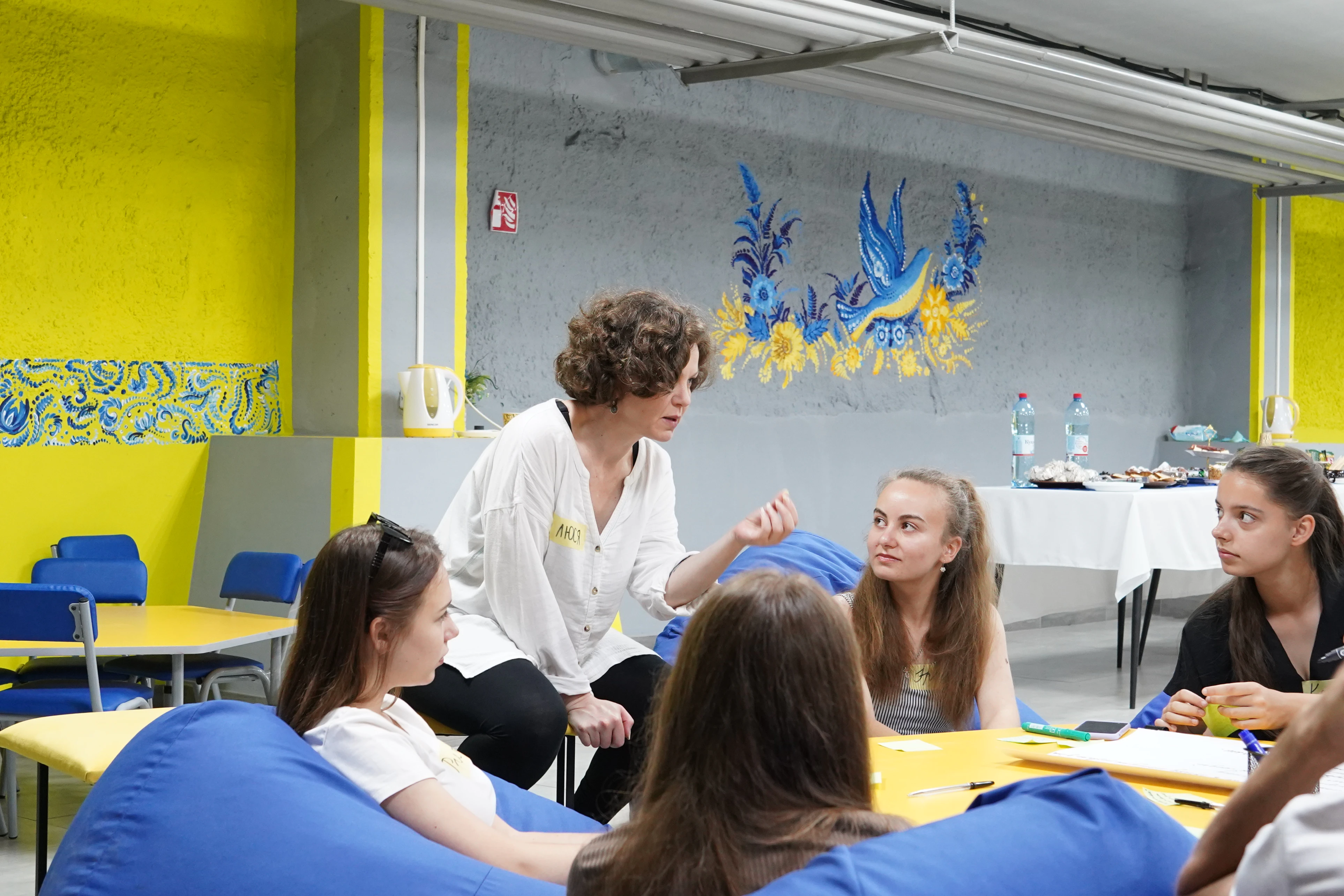
Tell us more about how this project came to be and what inspired its creation.
LN: The idea was sparked by a deep interest in community development through culture by the project initiator, Iryna Kats. She has been working with the Krasnokutsk community since 2021. Liudmyla Nychai supported the idea, provided curatorial guidance, brought together artists, and shaped the final exhibition concept, ensuring that the research was not just documented but creatively reinterpreted.
The inspiration came from the people we met along the way—elders who still remember ancient building techniques, artisans who keep traditional skills alive, and young creatives eager to merge the old with the new.
We wondered how communities could rediscover their identity through heritage. Many small towns and villages in Ukraine possess invaluable cultural knowledge, but this knowledge is often underappreciated or overshadowed by modern urbanization and war-related displacement.
We wanted to create a project where people don’t just study heritage, but actively engage with it—where a forgotten craft, a song, or an old building technique can inspire new artistic and architectural ideas.says Iryna Kats
What role does the Community Social Center "Hata-Mazanka" and the Nazariy Voitovych Residence play in this project?
IK: The first "Angle" (Kut) of our project was Hata-Mazanka, a community-driven social space in the village of Cherneshchyna, Krasnokutsk community, Kharkiv region. This place was revitalised through grassroots efforts, beginning as a school research project by students and teachers from Krasnokutsk Lyceum No.1.
Through interviews with elders, students collected knowledge on traditional house-plastering techniques, clay compositions, and the thermal properties of different materials. This research led to a massive community "Toloka" (collective work event) in July 2023, where over 50 people—students, teachers, local officials, and villagers from six neighboring communities—came together to restore a 100-year-old earthen house.
Following this success, the NGO Cultural Dialogue and the Krasnokutsk Council secured a major grant to establish a community social center in the Hata-Mazanka. Today, it serves as a multifunctional space—hosting workshops, cultural events, and even international visitors.
More than just a restored building, Hata-Mazanka is a magnet for community interaction. It brings together old and new knowledge, proving that traditional skills—like clay plastering and communal labor—can be powerful tools for strengthening social ties, fostering resilience, and even inspiring sustainable architecture.
The second "Angle" (Kut) is the Nazariy Voitovych Art Residence, located 772 km away in the Zbarazh community, Ternopil region.
Founded in 2017 by the NGO Congress of Cultural Activists and the NGO Family of the Heavenly Hundred Heroes, the residence was created to honor Nazariy Voitovych, the youngest artist killed during the 2014 Revolution of Dignity. The space—originally an agricultural building, later used as a church—was transformed through five years of collective effort by artists, the local community, and international donors.
Over time, the residence evolved into a hub for artistic mobility, hosting international artists, exhibitions, and workshops. It also carries a deep connection to themes of forced migration—first, due to the displacement of Lemkos in the 1940s, and later, when the residence became a refuge for artists and displaced families during the full-scale Russian invasion in 2022.
Projects like the photo series "Pishaky" by Olexandra Pavlovska and the film "Residence. Alive" explore the layered histories of displacement and adaptation, making the Voitovych Residence a crucial space for rethinking identity, migration, and resilience.
Despite their different histories, Hata-Mazanka and the Voitovych Residence complement each other perfectly. One focuses on reviving local traditions through direct community involvement, while the other engages with artistic, national, and even international narratives of heritage and resilience.
By bringing them together in KUT 772, we have created a bridge between the past and the future, between local craftsmanship and contemporary art, and between two regions that face different yet connected challenges. This interplay of traditional knowledge and artistic rethinking is what made our project unique and impactful.
How challenging was it to establish partnerships for this project?
IK: Honestly, building partnerships was both rewarding and challenging. Some organisations and local authorities were immediately on board, recognising the project’s value, while others were hesitant at first. We had to convince them that heritage is not just about the past—it’s about the future, too.
We also faced logistical challenges—organising events and exhibitions across multiple locations required precise coordination. But the key was genuine, long-term relationship-building. We didn’t just approach partners as funders or supporters—we treated them as co-creators of the project.
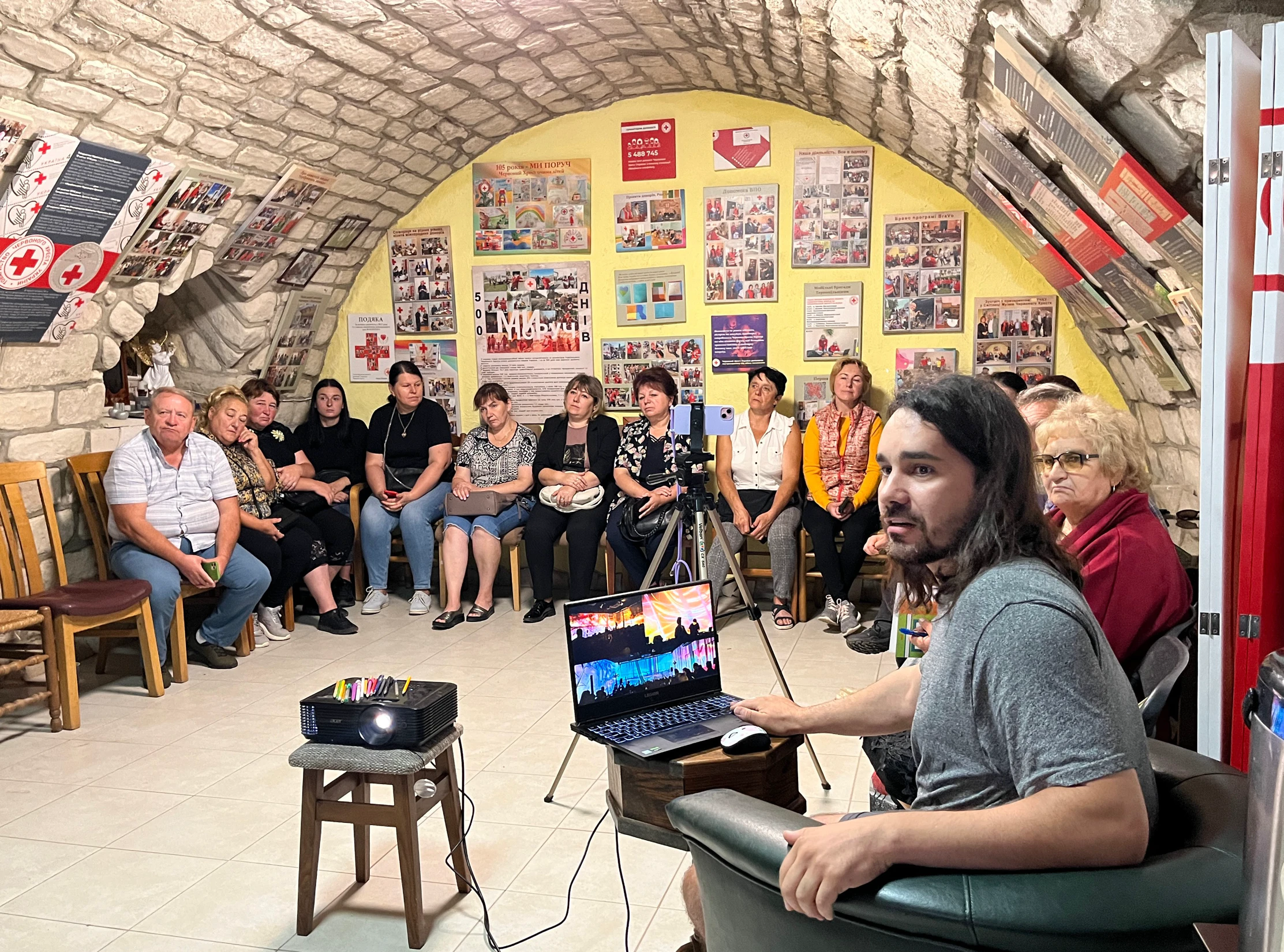
What key factors determined the selection of specific partners and locations?
LN: We collaborated with: partners we had worked with before, reliable organizations recommended by colleagues in the field, initiatives that we personally admire.
It was also crucial to connect the state, municipal, non-governmental, and independent sectors to foster dialogue and ensure the sustainability of practices.
Tell us more about the discoveries and concrete results of your research.
One of the most fascinating aspects of this project was discovering how much knowledge was hiding in plain sight—things that people lived with every day but didn’t necessarily see as valuable or unique. When we started looking deeper, we uncovered incredible traditions, skills, and personal histories that had been passed down through generations.
says Iryna Kats
IK: For example, earthen construction techniques turned out to be not just an old building method but a highly sustainable and resilient approach—something incredibly relevant today, especially in the context of post-war reconstruction. We saw firsthand how local masters are adapting these methods, proving that traditional knowledge offers practical solutions to modern challenges.
Another major discovery was how much history is embedded in personal stories—stories of migration, war, resilience, and adaptation. These narratives showed us that heritage is constantly evolving—it’s not something static, stored in museums, but something that shifts and adapts with each generation.
We also explored how contemporary artists reinterpret traditional knowledge, transforming crafts into new artistic expressions. Many of the works created during the project—paintings, ceramics, installations, and video pieces—became a way to visually and emotionally connect with heritage, demonstrating that tradition isn’t just about preservation but also about creative transformation.
These discoveries didn’t just stay within our team. We brought them into a series of discussions and networking events, where researchers, architects, artists, cultural managers, and local craftspeople came together to talk about the future of cultural heritage.
One of the most important takeaways from these conversations was that heritage is deeply connected to identity and even a sense of security—especially during times of crisis. People feel safer when they know who they are, where they come from, and what cultural roots they stand on.
says Iryna Kats
We also explored broader questions: Who decides what parts of the past we carry into the future? How do we protect traditional knowledge in a way that ensures it remains alive and relevant? How do we balance preservation with innovation?
All of these discussions, along with the research and artistic reflections, came together in our exhibition. The exhibition itself was not just a display of objects—it was a space where we brought together tangible artifacts, contemporary artworks, and multimedia elements to create a multi-layered experience of heritage. Among the works were clay sculptures, beadwork, installations made of adobe blocks, paintings, and video performances—all reflecting different aspects of the communities’ traditions and transformations.
Ultimately, this project was about making heritage visible again—both to the communities themselves and to a wider audience. It showed that traditional knowledge is not just something of the past—it is a resource for the future, a source of resilience, and a foundation for creativity.
How will the art exhibition present the research findings?
IK: The exhibition "Kut 772. Treasures" is the result of architectural-artistic research and reflections on intangible cultural heritage across two communities, separated by 772 km. Our goal was to reveal the potential of creativity that often gets lost in daily struggles and is overshadowed in times of war.
We set out with abstract yet essential tasks: to observe, to listen, to collect experiences, to share, to immerse ourselves in local knowledge, and to translate it into our curatorial, artistic, and architectural expressions.
Each community offered unique starting points for exploration.
In Krasnokutsk, everything began with Hata-Mazanka on Beleben, a space where locals actively practice ancient clay-plastering techniques, transforming it into a hub for artistic collaboration and educational activities. Our journey then led us to BrAty, a creative cluster in Koziivka, where traditional craftsmanship has evolved into contemporary, sustainable businesses.
In Zbarazh, the programme took place at the Nazariy Voitovych Art Residence, where artists use modern media to reinterpret local history and collective memory. The very existence of the residence—named after a young artist who was killed during the Revolution of Dignity—is a powerful statement about preserving and processing shared historical experiences. The community itself serves as a living archive of historical events, reflected in its architecture, traditions, and daily life.
These two communities are very different yet equally rich—one actively integrates ancient traditions into modern life and business, while the other carefully preserves historical fragments, ensuring their recognition and protection.
However, the most valuable treasures we discovered were the people—the tradition bearers, the knowledge keepers, and those who actively seek to uncover and preserve their local identity.
This exhibition is about them. It’s about the people who embody cultural heritage—not just as history, but as something alive, practised, and passed on.
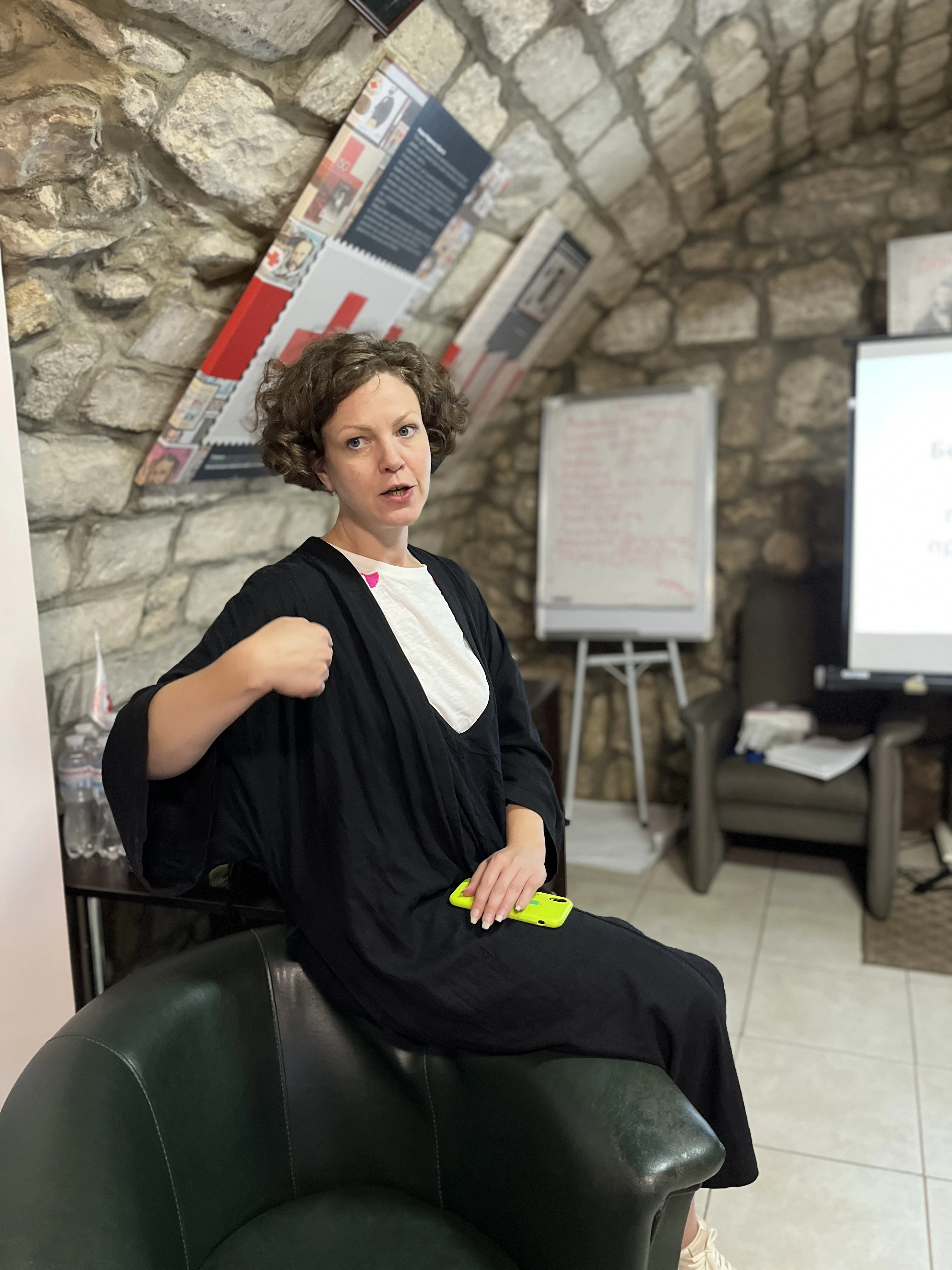
Tell us more about the discoveries and concrete results of your research.
LN: One of the most striking discoveries we made during the programme was the significant visual differences in cultural heritage, which are clearly influenced by both the natural environments and historical circumstances. The Kharkiv region, primarily steppe territory, belongs to the cultural zones of Slobozhanshchyna and Naddnipryanshchyna. While similar in agricultural practices, it has a distinct craft style and architectural approach compared to the Zbarazh community. Zbarazh, on the other hand, is a mosaic of small cultural traditions from Galicia, Podillia, and Volhynia, with an additional influence of Lemko heritage, stemming from the forced relocations in the past.
Postcolonial discourse in Ukraine has not yet fully matured as a phenomenon. Scholars, institutions, government representatives, and even activists are still in the process of dismantling colonial narratives. One major issue has been the tendency to simplify classification systems and homogenize cultural distinctions, which has led to the devaluation of unique traditions. Our goal was to challenge this by presenting differences as valuable treasures—deserving of recognition within the walls of a major museum. This was a step toward restoring justice to the value of traditional knowledge.
What specific research tools or technologies did you use during the study?
IK: Our methodology combined traditional research approaches with artistic interpretation and interactive tools. First and foremost, we engaged directly with people—conducting interviews, collecting personal narratives, and listening to how they perceive their heritage. These conversations were invaluable, providing insights not only into historical facts, but also into the emotional and symbolic significance of traditions.
To ensure community participation, we organised facilitated workshops where local residents could share experiences, reflect on their heritage, and even experiment with creative reinterpretations of traditional practices. These sessions allowed people to actively engage with their own cultural history rather than passively observe it.
A crucial element of our research was artistic expression. Our team translated the findings into various forms of art, including paintings, installations, ceramics, video performances, and experimental works using natural materials such as earth, grain, and wood. Some artists worked within traditional techniques, while others explored contemporary media. The outcome was not just documentation, but a living, evolving representation of cultural heritage through a modern artistic lens.
What is the main message you want to convey to visitors through the exhibition?
IK: Heritage is not merely something to be preserved in museums—it is a living, evolving force. It’s not just about remembering the past but about shaping the future by recognising the creative potential hidden in everyday life and within people themselves.
Our greatest treasures are the people—the tradition bearers, the knowledge keepers, and those who actively explore and cherish local uniqueness.
What were the initial reactions to this project?
LN: The first audience was the museum staff, and their initial reaction was resistance. They did not immediately see the value in what we were bringing into the exhibition space. However, as the project unfolded, they became engaged in the process—guiding visitors, sharing the narratives, and ultimately taking pride in the project.
Visitors at the exhibition opening listened with enthusiasm, expressing gratitude for the new perspectives and discoveries we presented to them.
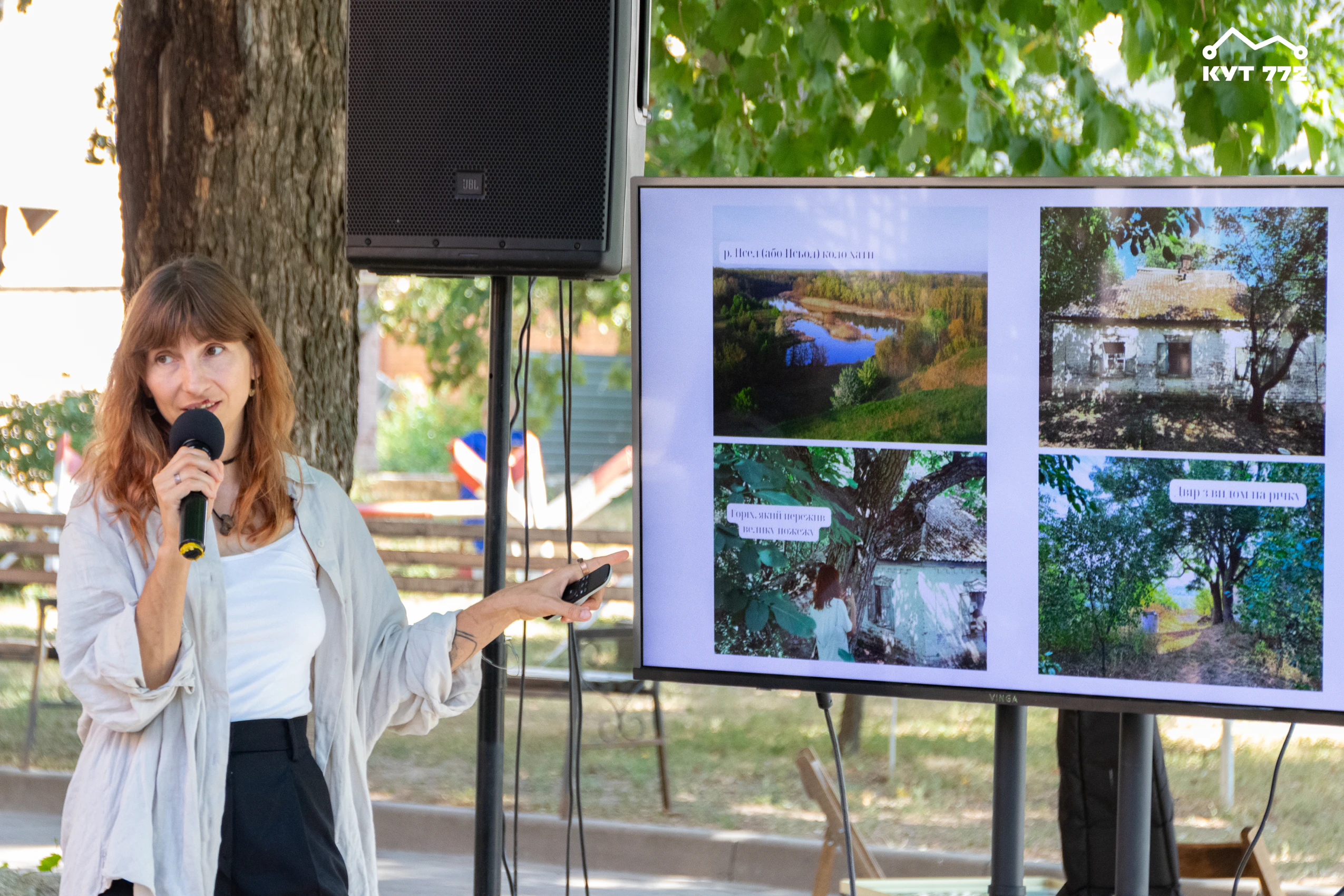
How has the project contributed to restoring the identity and self-confidence of communities?
LN: Simply paying attention to individuals, drawing communities’ focus to their local treasures, and managing these processes creates empowerment. It gives people a renewed sense of pride in their cultural lineage, highlights opportunities, and encourages them to further develop their traditions.
What changes have you observed in how local residents perceive their cultural heritage?
Residents have become more vocal and proactive in preserving their traditions. They now view heritage not just as a nostalgic memory but as a tool for development and creative expression.
says Iryna Kats
IK: One of the most important results of the project has been the expansion of networks between local communities and experts, artists, and institutions, which has opened doors for continued collaboration. Following the project, we observed the following changes:
- Local artisans and cultural practitioners have strengthened their commitment to developing new initiatives based on traditional crafts and practices, gaining increased support and recognition.
- Architects and urbanists have gained a deeper appreciation for traditional building techniques, recognising their relevance to sustainable development and post-war reconstruction.
- Cultural organisations have reaffirmed their commitment to documenting and promoting heritage, finding new allies and platforms for sharing knowledge.
- Legal experts in intellectual property have shown interest in exploring mechanisms to protect traditional knowledge and geographical indications, ensuring their continued relevance and ownership by small communities.
- Museums and local councils have committed to integrating heritage-based approaches into education, tourism, and community development programmes.
These developments demonstrate a shift—heritage is increasingly seen as a resource with real potential to shape the future. The project has helped communities to gain confidence in their cultural assets, ensuring that traditions are not only preserved but actively practiced, shared, and adapted to contemporary challenges.
How can this project influence the sustainable development of small communities in Ukraine?
By linking heritage with modern creativity, this project has shown that cultural roots can serve as a foundation for new economic and social opportunities.
says Iryna Kats
IK: The project has also highlighted that intangible heritage is more than just a cultural asset—it is a tool for social cohesion and economic revitalization. We demonstrated how traditional knowledge and contemporary artistic practices can coexist, interact, and generate new values that remain relevant in the modern world.
Additionally, the project has revived the living knowledge of small communities, showing how traditional practices can address contemporary needs. For example, earthen construction techniques—deeply rooted in local traditions—hold immense potential for post-war reconstruction. Local craftsmen have shown that traditional knowledge-based solutions are essential for sustainable community development and rebuilding efforts.
A great example is the reinterpretation of adobe blocks (saman), which could serve as an eco-friendly and cost-effective construction alternative, offering sustainable, locally sourced solutions for rebuilding homes and community spaces. Through initiatives like this, we see that tradition is not about the past—it actively shapes the future.
What are the next steps after the project’s completion?
This is just the beginning. The findings from this pilot project lay the groundwork for further research in other regions of Ukraine—through residencies, workshops, and artistic collaborations. We will continue to explore new ways to activate heritage and integrate it into contemporary cultural spaces.
says Iryna Kats
Author: Ján Janočko
ZMINA: Rebuilding is a project co-funded by the EU Creative Europe Programme under a dedicated call for proposals to support Ukrainian displaced people and the Ukrainian Cultural and Creative Sectors. The project is a cooperation between IZOLYATSIA (UA), Trans Europe Halles (SE) and Malý Berlín (SK).